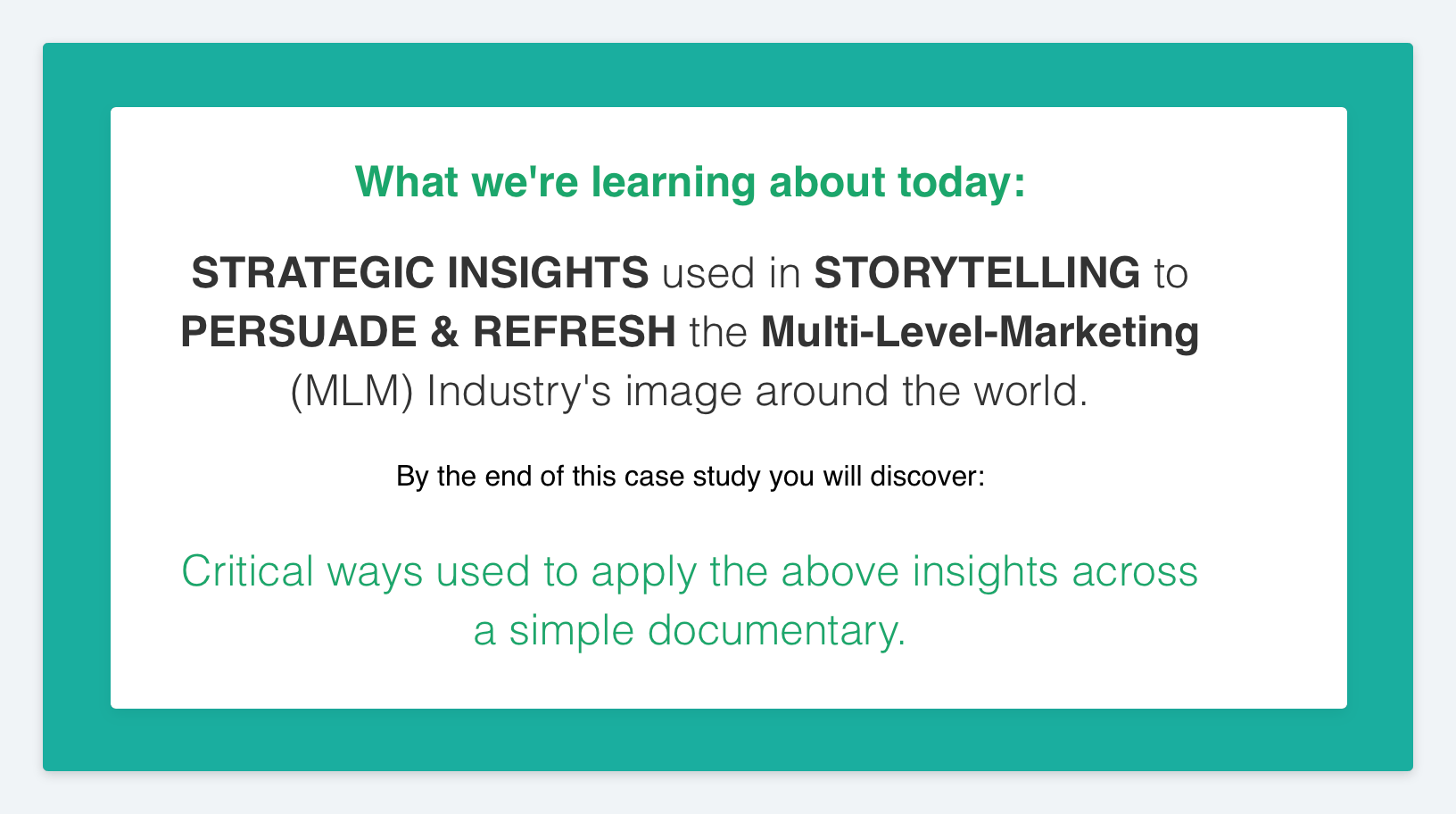
Hello, tremedously curious folks! It’s so great to have you here:)
I wish that this following case-study adds up to your growth and helps you develop your STRATEGIC THINKING to the next level.
What we’re learning about today:
STRATEGIC INSIGHTS used in STORYTELLING to PERSUADE & REFRESH the Multi-Level-Marketing (MLM) Industry’s image around the world.
By the end of this case study you will discover:
Critical ways used to apply the above insights across a simple documentary.
- 1. Problem to solve: The MLM Industry facing trust issues in the past years, having to cope with a considerable amount of media titles meant to sabotage the core vision of the industry: that anyone can make it to the top.
- 2. Solution/ Marketing Approach: A Documentary meant to approach the problems that the industry is facing by presenting the MLM ecosystem through a re-branded image dressed in the coolest outfit nowadays: Entrepreneurship.
- 3. Content Source for the Audit: The Rise of The Entrepreneur by Eric Worre Documentary.
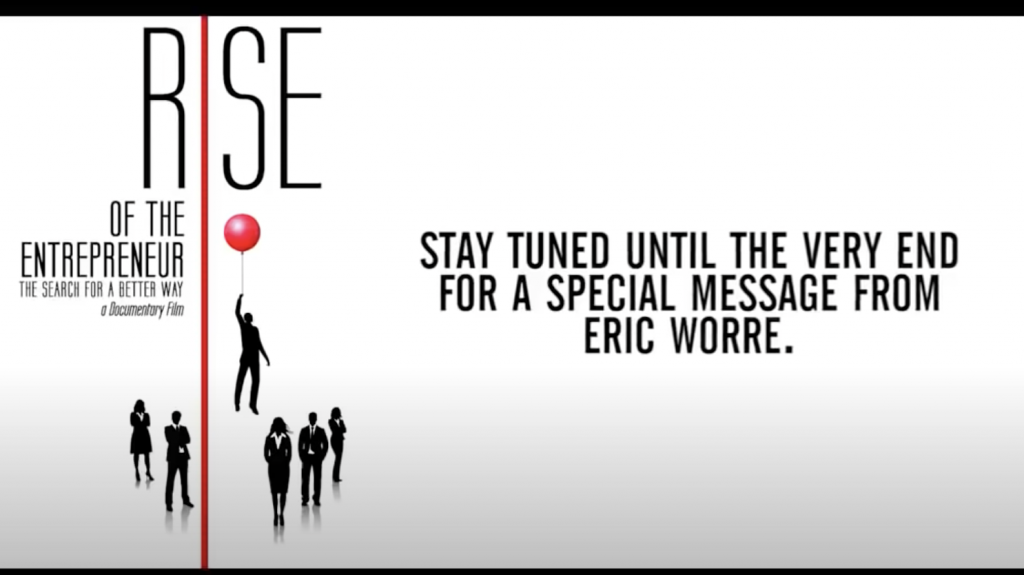
STRATEGY DECONSTRUCT:
Before everything else, do keep in mind that this is a critical analysis from a persuasive storytelling point of view and it can be subject to debate. What I am aiming here is to highlight STRATEGIC INSIGHTS spotted in certain marketing operations and notice the tactics used to reach the core objective: rebranding.
In this case, we will analyze how The Rise of the Entrepreneur Documentary is using Storytelling to penetrate its audience with a certain message.
The KEY ANGLES for the STRATEGY DECONSTRUCT are:
- Title Explained
- Keywords tactics to Target the Core Audience
- Trust-building through Key Authorities
- Priming and its role in amplyfing persuation
- Benchmarks setting and their role în mindset setting
- The core metaphor usage to emphasize the documentary’s message
- Refreshment of the main terminology
- Context Usage to strenghten trust
- Addressing the industry’s Image issues
- Sound Background
1. TITLE EXPLAINED
The Rise of the Entrepreneur
The TITLE is a great hook meant to sell an ASPIRATIONAL VISION. There are 3 tactics used in marketing to capture the audience and they are all related to relatability, just from different mindset angles:
- By highlighting the PROBLEM / PAIN POINT, tactic that works on people who have their mindset focused on problems.
- By highlighting the SOLUTION for your audience’s problem, which works on people who are focued on solution finding.
- By highlighting the VISION that would crystalize if the problem gets solved, a tactic that works on people who tend to be optimistic visionaries;
In The Rise of the Entrepreneur, they went for a progressive mix, yet the big umbrella used is the VISION. Why is the vision choice a great approach? Because the timeline of the solution process is longer. They are not selling a fast-consumer-good product, which solves an issue on the spot, they are selling the multi-level marketing lifestyle, which is a long-term commitment and that requires a strong incentive, therefore: the VISION of:
FINANCIAL FREEDOM accessed through ENTREPRENEURSHIP.
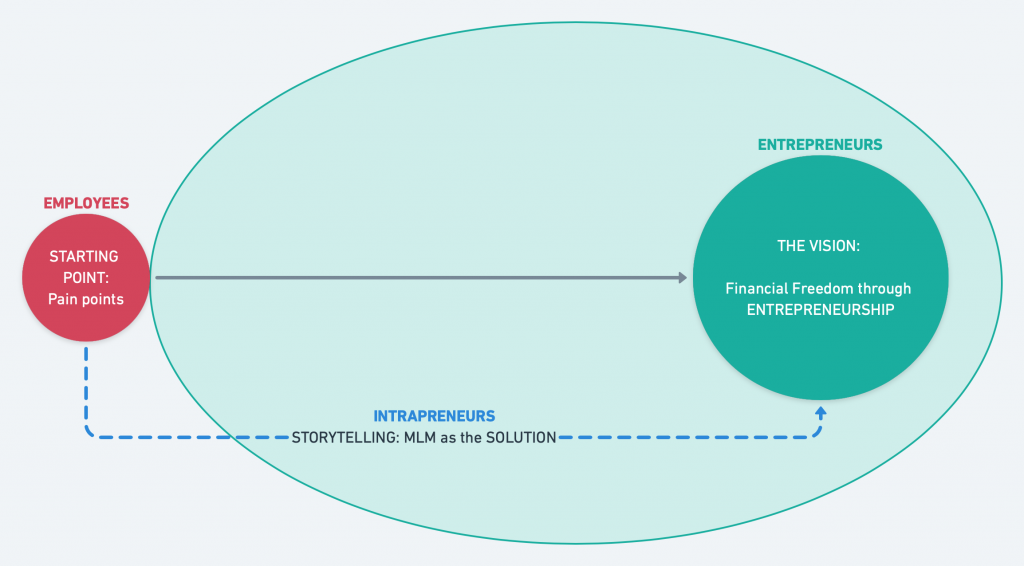
2. KEYWORDS TACTICS TO
TARGET THE CORE AUDIENCE
They start on point with the problem in the first 40 seconds and for the first minute and a half, they explore all the important pain points which are relevant to the core audience of the documentary.
CHECK IT OUT:
- 00:40 – the world is changing faster than ever. What used to take decades is now taking years or even months. => Message: YOU need to ACT NOW.
- 00:41 – What you see right now is the illusion that people have had for many decades about the workplace being the secure place to work the rest of your life. => You are not safe at your job anymore/ Targeting employed people.
- 00:55 – For the first time in the history of our nation, our children will not do as well as us. => Targeting parents/ exploring the parental protection instinct.
- 01:04 – We’ve seen our friends get laid off, we’ve been laid off, we’ve had our pay cut, people are overworked and underpaid, they seem to have less time and less freedom. They live under constant pressure.
- 01:16 – if your employer loves you, they may have to cut you. => Targeting people unhappy with their jobs/ exploring the fundamental need of security/ Maslow Needs Pyramid.
- 01:22 – The heart attack rate increases by 35%. => Projecting the risks of delaying the decision to change.
- 01:23 – Technology is accelerating. Job security is declining it just doesn’t seem like the old models of making a living are as reliable as they used to be in every aspect of our lives. => Targeting people at a certain age who fear the tech acceleration because they face adaptation challenges. People who are still working on “the old models of making a living”.
- 01:37 – We live in the greatest country on the planet and there are a lot of people sitting around complaining and being cynical like everyone’s whining about this old model. => Targeting people living in The United States.
- 01:50 – Look at all this over here, look at all this opportunity since so much of our lives revolve around our work and the way we make our living many people are thinking there just has to be a better way. => Framing the mood shift through projecting “the light at the end of the tunnel”.
- 02:01 – The biggest challenge facing our world today is not making money, it is what we are going to do with all the displaced unemployed people. People are afraid that they’re going to make the wrong decision. People are afraid of the unknown, people are afraid that maybe I don’t have the skills. => Targeting unemployed people going through professional shifts.
- 02:16 – Hey sports fans, the industrial edge is over, it’s dead, it’s dying. That’s why going to school to get a job is an obsolete idea. A steady paycheck is an industrial age idea. => Leveraging urgency to accelerate decision making.
3. TRUST BUILDING THROUGH
USING KEY AUTHORITIES.
Just as Facebook was first launched at Harvard to project the University’s leading authority over the social media platform for trust-building towards, The Rise of the Entrepreneur has explored this particular insight just the same. They used important and relevant authorities to amplify the trust of the documentary.
Since it’s a documentary on Financial Education & Mindset, let’s take a look at the key message endorsers they gathered:
Business Celebrities:
- Les Brown – One of the world’s most renowned motivational speakers. Les Brown is a highly sought-after resource in business and professional circles for Fortune 500 CEOs, small business owners, non-profit, and leaders from all sectors of society looking to expand opportunities. For 30 years he has studied the science of achievement by interviewing hundreds of successful business leaders and collaborating with them in the boardroom translating theory into bottom-line results for his clients.
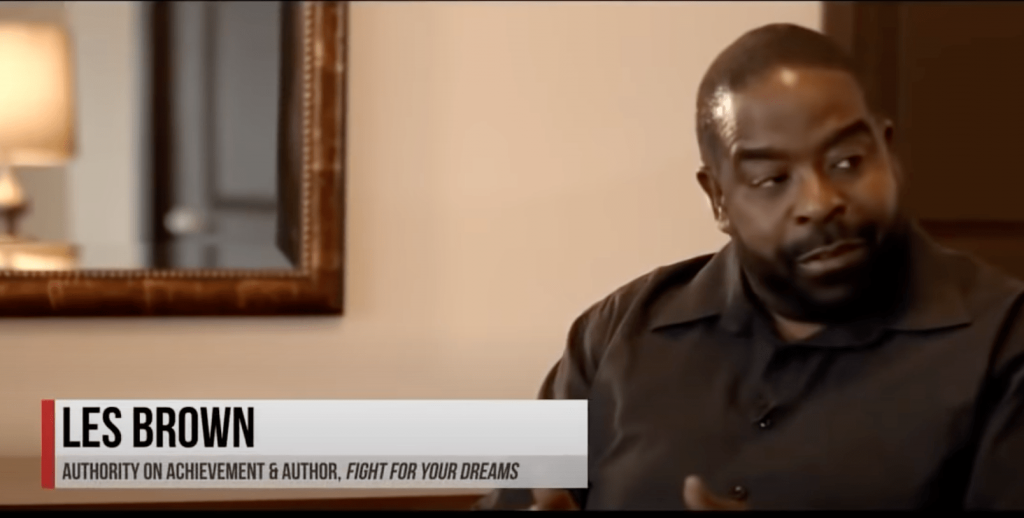
- Robert Kiyosaki – American businessman and author. Kiyosaki is the founder of Rich Global LLC and the Rich Dad Company, a private financial education company that provides personal finance and business education to people through books and videos.
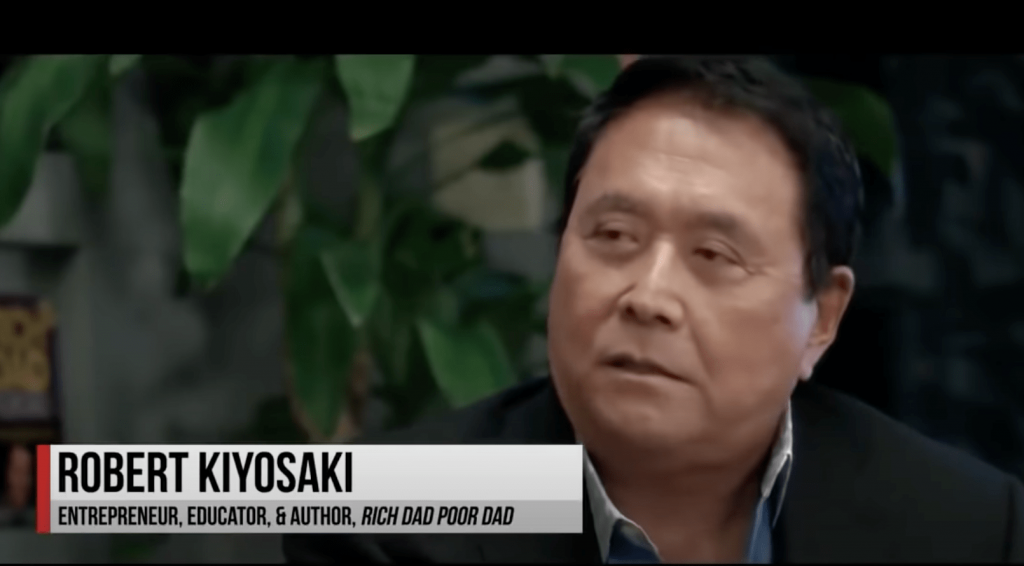
- Brian Tracey – is a Canadian-American motivational public speaker and self-development author who has written over 8 books that have been translated into dozens of languages. His popular books are Earn What You’re Really Worth, Eat That Frog!, No Excuses! The Power of Self-Discipline and The Psychology of Achievement. Tracy is also the chairman and chief executive officer (CEO) of Brian Tracy International, a company that sells counseling on leadership, sales, self-esteem, goals, strategy, creativity, and success psychology.
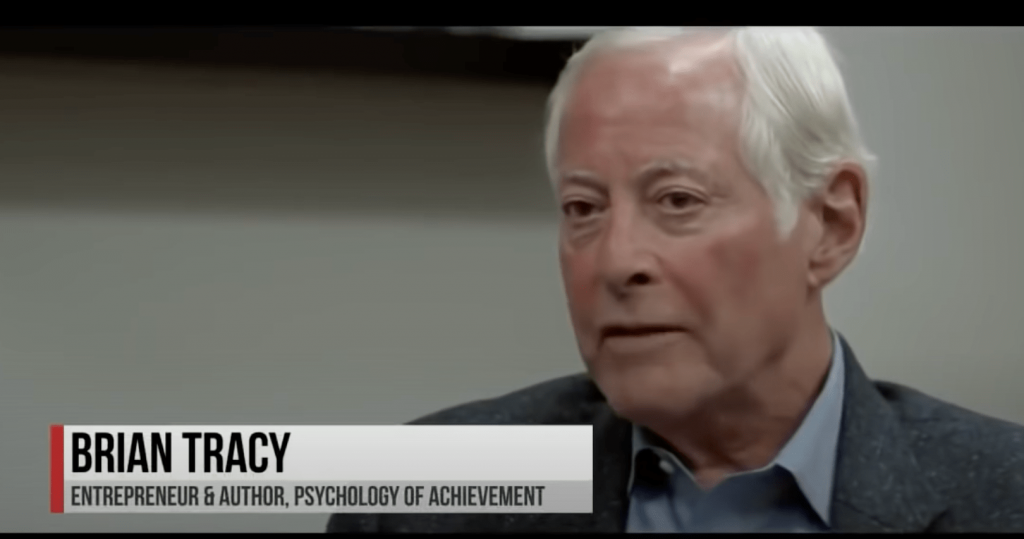
- Jack Canfield – American author, motivational speaker, corporate trainer, and entrepreneur. He is the co-author of the Chicken Soup for the Soul series, the first book, like most subsequent titles in the series, consisted of inspirational true stories about ordinary people’s lives. The book sold more than 250 titles and 500 million copies in print in over 40 languages.
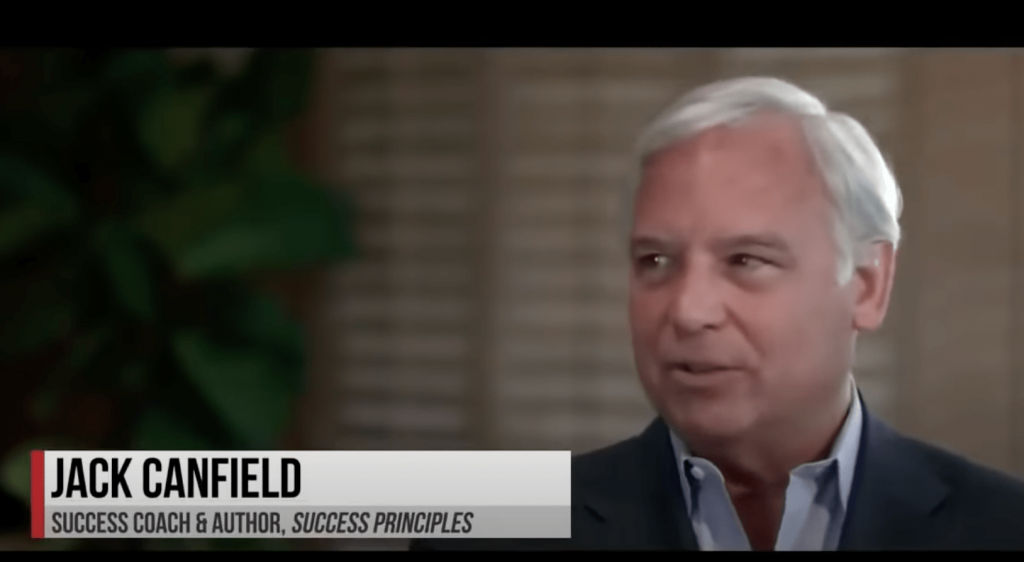
- Bob Proctor – Canadian self-help author and lecturer. He is best known for his New York Times best-selling book You Were Born Rich and a contributor to the famous positive thinking film, exploring the law of attraction: The Secret.
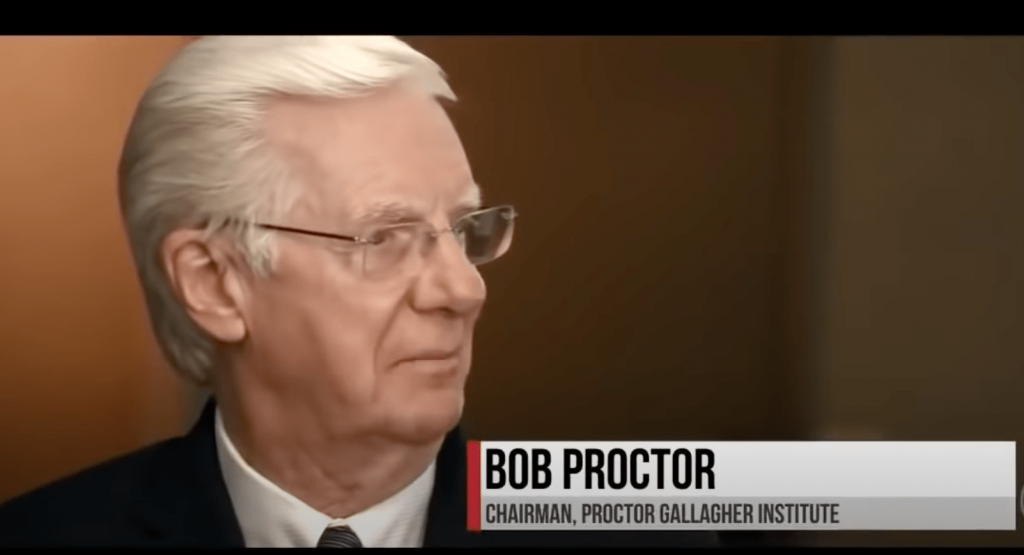
- John Assaraf – John has built 5 multimillion-dollar companies, written 2 New York Times Bestselling books, and featured in 8 movies, including the blockbuster hit “The Secret” and “Quest For Success” with Richard Branson and the Dalai Lama.
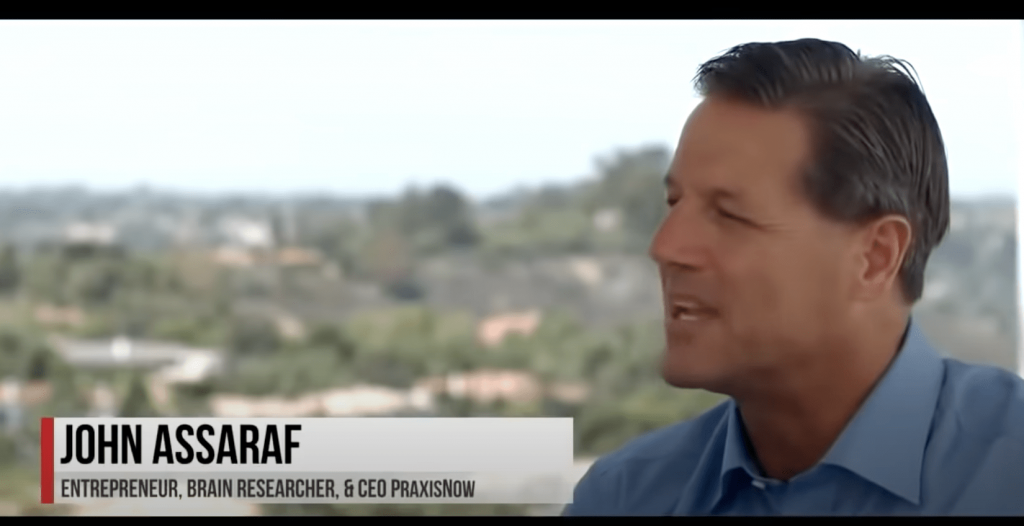
- Kevin Herringhton – is an American entrepreneur, bestselling Author and business executive. He has appeared as an investor în the television series Shark Tank.
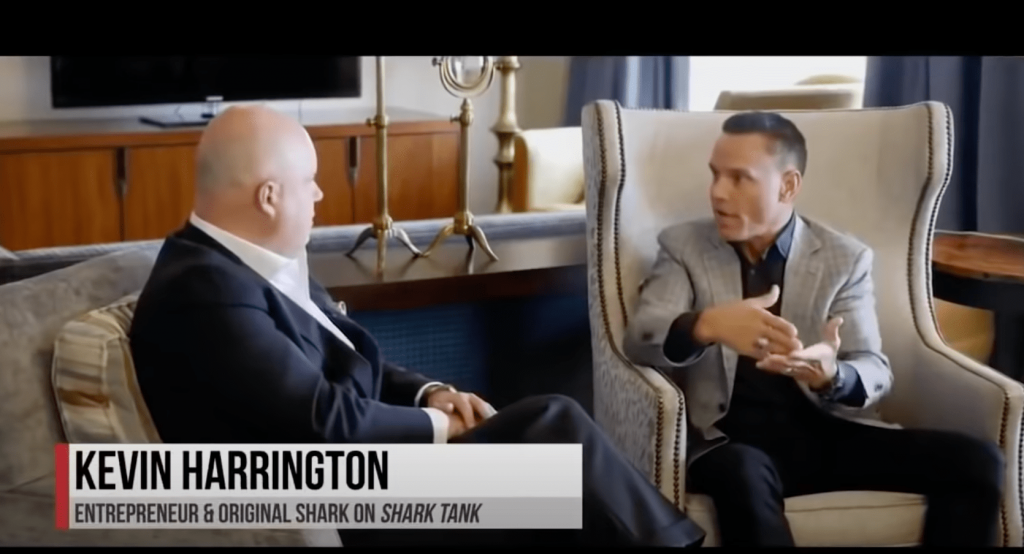
Others Professional Authorities:
- Jordan Adler – Business Owner & Author of the Amazon Best Seller, Beach Money;
- Kody Bateman – Keynote Speaker, Relationship Marketing Leader, Author & Personal Development Specialist;
- Chris Brogan – Bestselling Author & Executive-level strategist and CEO advisor, working with companies at the 100M+ revenue range;
- Richard Bliss Brooke – Author, business consultant & owner of multiple companies, including direct selling, traditional business, and ontological coaching;
- Ali Brown – Business Coach & Enterprise Consultant for companies that ranked in the Inc. 500 list in the U.S;
- Harry S. Dent Jr. – Harry Shuler Dent Jr. is an American financial newsletter writer. His 2009 book, The Great Depression Ahead, appeared on the New York Times Bestseller List.
4. PRIMING AND
ITS ROLE IN AMPLIFYING PERSUATION
There is a critical part of the documentary with a tremendusly strategic role in the spotlight switching from PAIN POINTS to the SOLUTION and it’s all about EMOTIONAL FRAMING through storytelling. What you will notice in the below extracts is that the documentary directors are setting the emotional stage for the solution launch through priming.
In psychology, priming is a technique in which the introduction of one stimulus influences how people respond to a subsequent stimulus. Daniel Kahneman’s fans most probably will recall his priming examples from book Thinking Fast & Slow. In The Rise of the Entrepreneur, priming is used to set the emotional stage in a certain way which makes the audience vulnerable and more susceptible to the incoming solution: Joining multi-level marketing industry.
But let’s put the theory on a side and get straight to how they did it:
- STEP 1: Decreasing trust in College Education (Undermining the audience’s universal perception of what a “secure future” is perceived to be);
- STEP 2: Amplyfing fear through decreasing the faith in a safe future (through addressing the debt increasing topic proved by financial statistics);
- STEP 3: Framing the victim archetype. Relatability is activated here through mirroring the targeted persona’s average life. Priming is used to enhance the feeling of vulnerability through triggering negative, emotions:
CHECK IT OUT:
- 09:37 I feel sorry for the person who dreads going to work
- 09:42 who is sick to their stomach on monday morning, who hates their alarm clock
- 09:48 who gets a little glimmer of hope on a wednesday because it’s hump day
- 09:53 and says thank god it’s friday and they live for those two days a week where they get to be themselves and get they don’t have to be around people that don’t they don’t like and they don’t have to play the political game in the office
- 10:07 and they don’t have to live this half-life the person that works 50 weeks a year just to be able to have the two weeks for vacation and you know what happens
- 10:23 to most of them nowadays they don’t have a vacation they have a staycation they have time off of work but they don’t get to go where they want to go because they’re overextended they’ve got all this debt they got
- 10:38 they hate their alarm clock. They can’t sleep until they’re done they
- 10:40 have to spend most of their life in traffic. I feel sory for those people, because…
STEP 4: Leveraging ego sensitivity, through storytelling which highlights the audience’s lack of freedom & individuality;
- 10:51 You know it i see this really interesting attempt at rugged individuality in a 6×8 rectangle and i feel like these people’ are all the same except for the little push pins of the pictures there’s different pictures, here’s this name Jenny and this is named Sujara.
- 11:03 But it’s the same people and this is how they are and they’re just like the zombies and there’s no joy in. There there’s no fun, there’s always the wacky woman who decorates her cubicle and that’s that’s the most she can do there.
- 11:17 the basis for their life is worry i’m worried you know maybe i’ll get fired i’m worried maybe my company will go out of business i’m worried
- 11:24 i can’t keep split spinning the plates on paying the bills i’m worried about
- 11:28 how do i send my kids to college i’m worried what if the transmission of my car breaks that’s you know two or three i can’t fix it people live in a in a sea of worry.
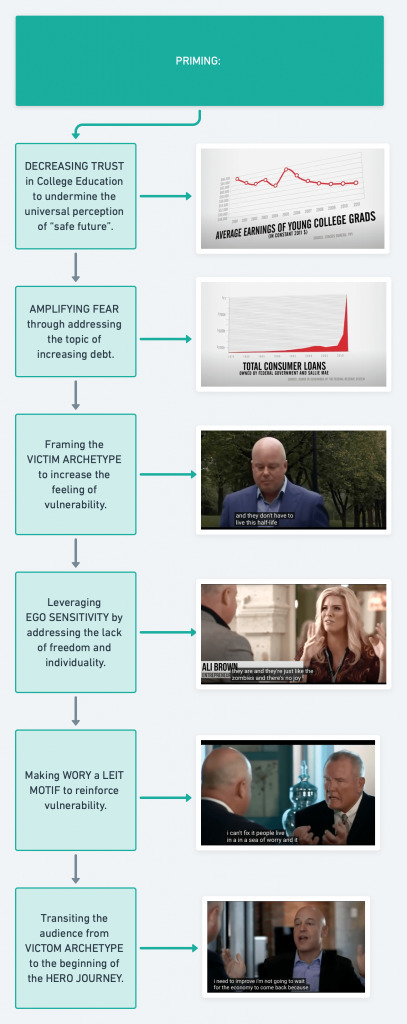
5. BENCHMARKS SETTING AND THEIR ROLE IN
MINDSET SETTING
In Marketing, when you launch a fresh new product which doesn’t have a similar competitor on the market, you have to be aware of the fact that your audience might have challenges in knowing how to evaluate it.
Imagine you launch a new cooking tool for $70. Your Customer might wonder:
Is this expensive?
Is the price decent?
Is it cheap?
This is where marketers developed the Middle Price Benchmark – a pricing technique that sets the value of the product you want to sell in between 2 other products from the same category: Just one will have at a lower price, while the other will be more expensive. The studies have showed that people will choose the middle product, which is not the cheapest, yet not the most expensive one, so
the framed perception would be that it has to deliver the job at a decent quality /a fair return on investment.
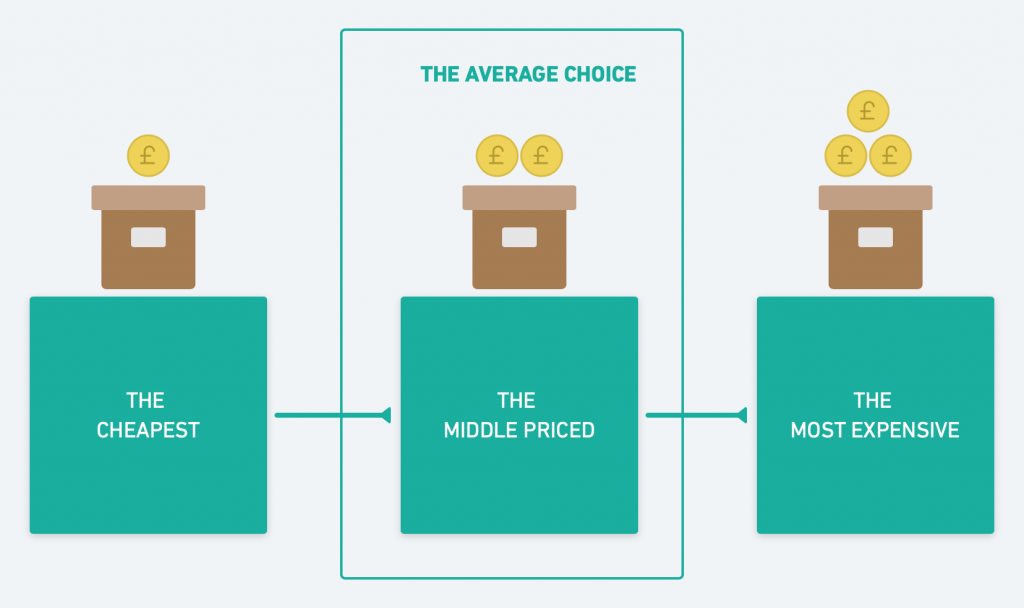
How is this technique relevant to the STORYTELLING STRATEGY OF THE DOCUMENTARY? In two particular ways:
THE FIRST ONE: It guides people to have a personal assesment of their finacial incomes related to Americans’ Average Income Salaries. If you want frame people into jumping on the HERO JOURNEY, you have to help them understand where they stand first.

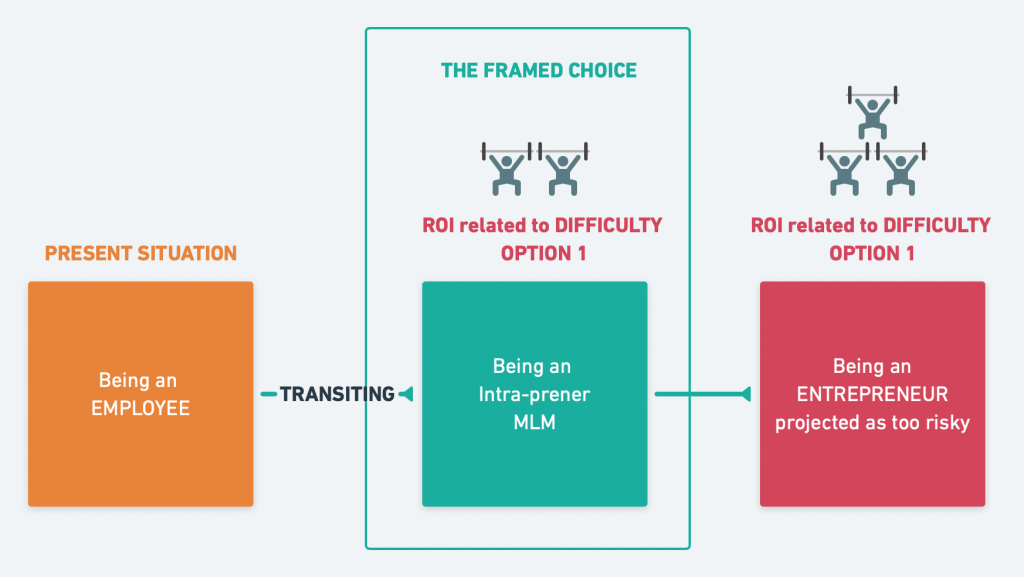
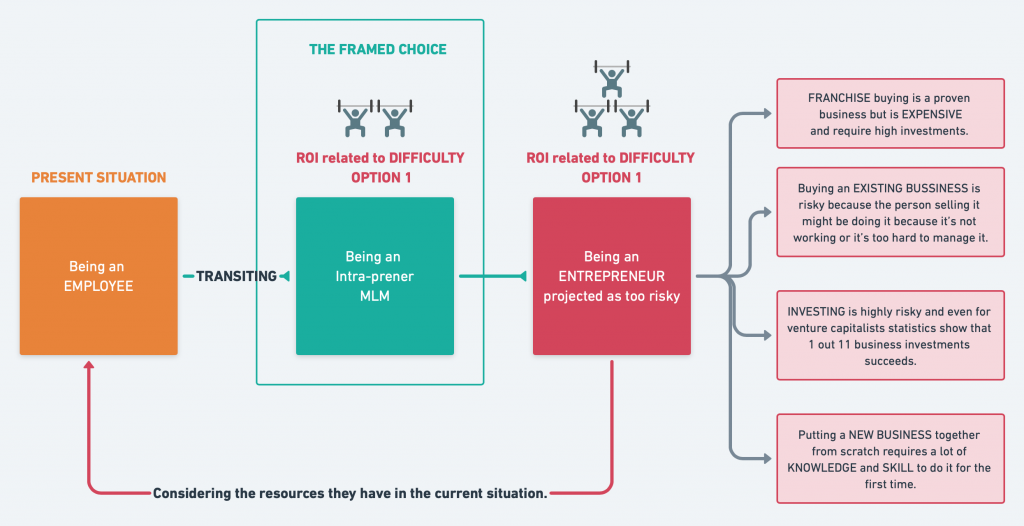
6. THE CORE METAPHOR USAGE TO
EMPHASIZE THE DOCUMENTARY’S MESSAGE.
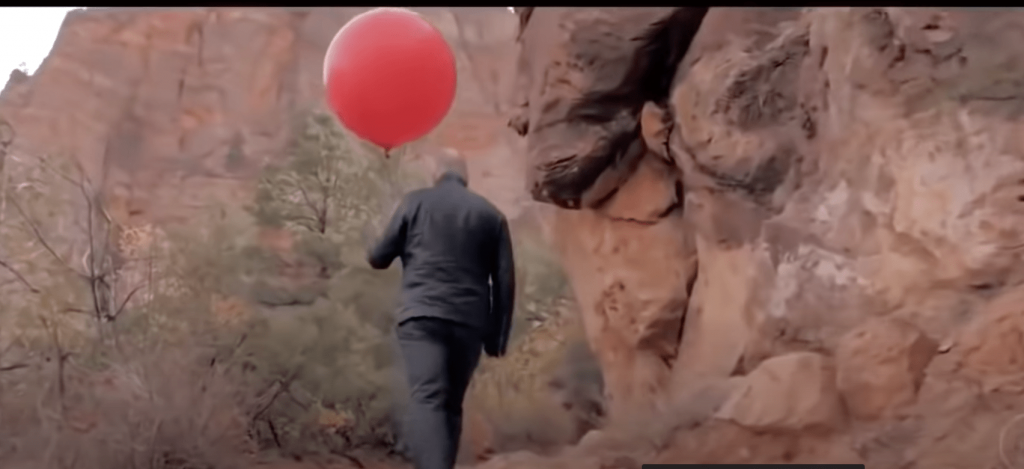
- THE COLOUR: RED is related to fire, to passion, to love, to life and courage in most stories. All the characteristics describing an entrepreneur.
- THE BALOON: The idea of rising, flying, heading to heights, heading to the light reffers to the journey that is about to start: The rise of the entrepreneur.
- THE CANYON LANDSCAPE: Can reffer to the rocky, dried, steady and life deprived reality that the targeted personas find themselves in: A life within a job they don’t like, that lacks joy, is difficult, exhausting and doesn’t provude them with dynamism. Canyons being renowned for having deep canals, can also relate to the idea that the sunlight is perceived to be too far from the bottom where they stand.
7. REFRESHMENT OF THE
MAIN TERMINOLOGY
- Problem: The terminology of Multi-Level-Marketing has been linked too often to pyramid schemes which started to be perceived through a negative filter.
- The solution: Changing the ferm to Network Marketing enhancing the idea that this is a Choice of highly-connected people, capable of building human relationships and strong partnerships through emotional intelligence. In 3 words:
Making it aspirational.
8. CONTAEXT USAGE TO
STRENGHTEN THE TRUST
Strenghtening the trust is made by evaluating the industry efficiency through putting its annual revenues in context with other industries.
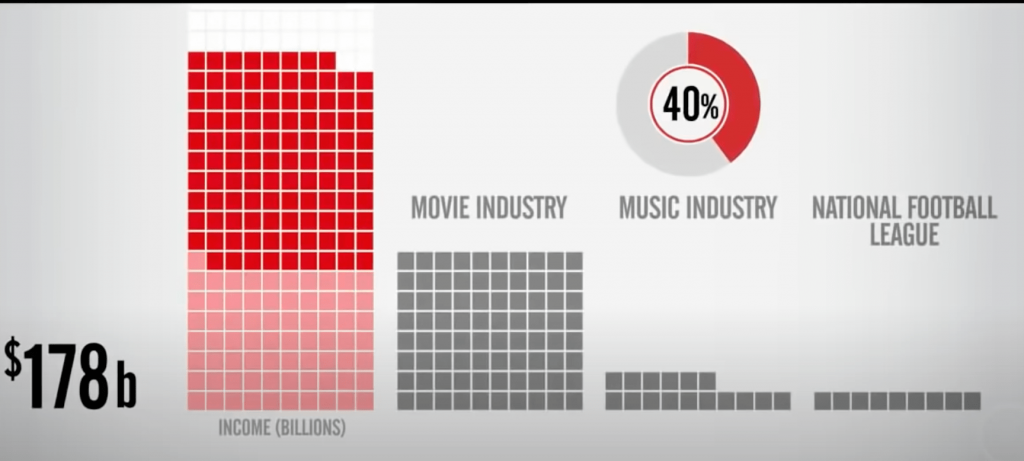
An important aspect you might observe though is that the total revenue is an accumulation of all the global Network Marketing combined, compared to the above industries, whose income are evalued on a national scale.
Fair framing?
Well, they are pretty clear in their communication, so you are responsible to notice this framing technique yourself and make your call.
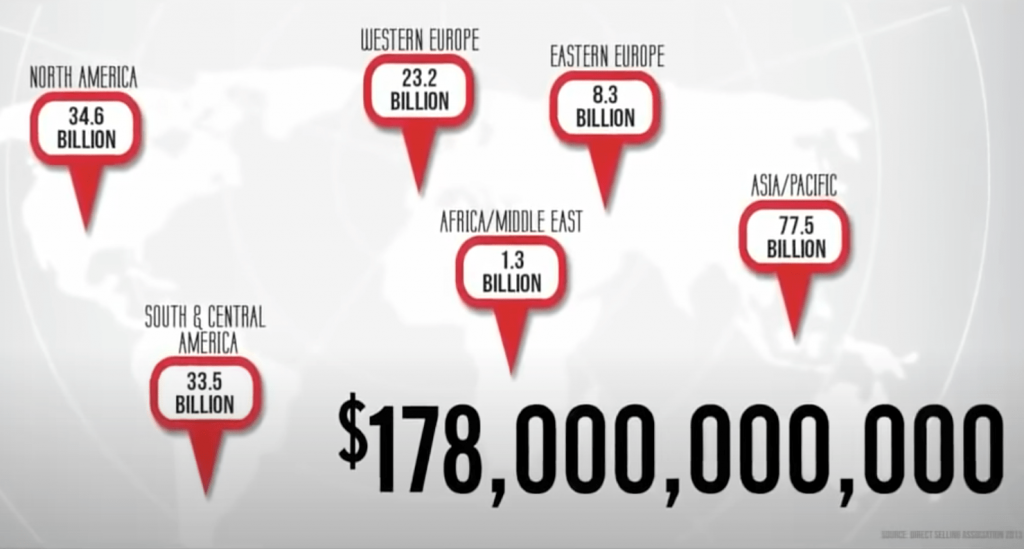
9. ADDRESSING THE INDUSTRY’s
GENERAL IMAGE ISSUES
There have been 3 main issues identified in the Multi-Level Marketing Industry and they all have been approached in the video:
- The fear of being fooled by the pyramid scheme;
- The inventory problem
- And the idea of just a few making money
I am not gonna dig into the detail of how they did it, but just want to highlight the TIMING IMPORTANCE: The PROBLEM ADDRESSING part came almost at the end of the video only AFTER the positive framing has been projected first and trust was built strong enough throughout all the tactics above.
My favorite analogy however is the one Robert Kyiosaki has used to undermine the idea of Multi-Level Marketing being a pyramid scheme, by emphasising that it’s the Corporations that are like that with hundreds of MBAs graduates (decreasing trust in college education) trying to reach the CEO Level, while only one will succeeds.
Compared to:
Network Marketing Industry – where it’s exaclty the oposite/ inversed pyramid: One person is developing multiple leaders.
I think that was a brilliant analogy from a persuation point of view.
10. SOUND BACKGROUND
LIGHT MUSIC FRAMING OPTIMISM
If you pay attention to the sound used all over the documentary it’s in complete sync with the narrative and perfectly timed for the songs to kick in when an important line comes up, enhancing a feel good/ optimistic mood framing.
To close it up, a DOCUMENTARY, is not just a documentary. It can be a powerful tool to shape people’s perception of a certain topic with a highly scalable reach potential due to the possibility to world wide distribution.
Pay attention to:
The expertise of those endorsing the information have
The words people use
The outfits in whish they are dressed
The locations used to film certain parts
The music background
The analogies and the metaphors used
The contexts used to present the Information
The data and the ways it’s presented
The examples used to achor emotional moods.
And so on.
They are ALL part of a STRATEGIC MAP meant to better market the core message of the material using persuasion, storytelling and directing techniques all at once and the question is:
Are you aware of them in order to make an objetive call on the subject yourself?